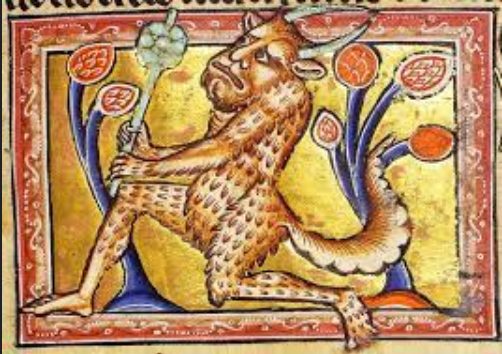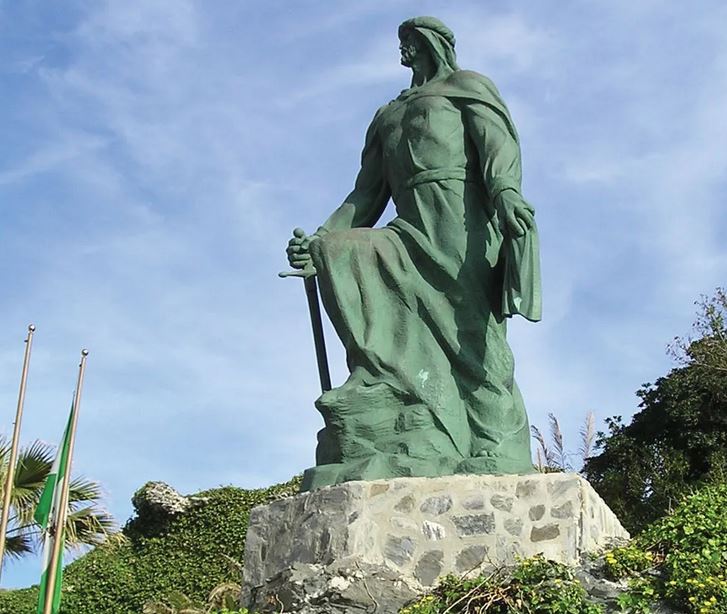The Aberdeen Bestiary is a medieval manuscript created in the early 13th century, around 1200-1230 CE. It’s a richly illustrated work that describes various animals, both real and mythical, accompanied by moral and allegorical interpretations. The manuscript is named after Aberdeen, Scotland, where it is housed in the University of Aberdeen’s library.
1. Manuscript Overview
The Aberdeen Bestiary was created between 1200 and 1230 CE, making it a product of the early 13th century. This manuscript is one of the most well-preserved examples of a medieval bestiary, a genre that combines natural history with moral lessons. It is currently housed in the University of Aberdeen’s library in Scotland, where it is preserved as a significant artifact of medieval literature and art. The manuscript is written in Latin and spans approximately 1,000 pages, containing detailed descriptions of over 100 animals, both real and mythical.
2. Illustrations and Descriptions
The Aberdeen Bestiary is renowned for its elaborate and colorful illustrations. Each page is adorned with intricate artwork that depicts a wide range of animals, from everyday creatures like lions and elephants to mythical beings such as the unicorn and the phoenix. The illustrations are characterized by their high artistic quality and imaginative details, reflecting both the artistic skill of the creators and the symbolic nature of the bestiary genre. Notable examples include the majestic lion, symbolizing Christ; the pelican, representing sacrifice; and mythical creatures like the unicorn and phoenix, which convey complex allegorical meanings. These illustrations not only enhance the manuscript’s visual appeal but also contribute significantly to our understanding of medieval manuscript art and symbolism.

3. Moral and Allegorical Significance
The Aberdeen Bestiary is not just a catalog of animals but a rich tapestry of moral and allegorical interpretations. Each animal entry in the manuscript is imbued with symbolic meanings that reflect the moral and religious views of the medieval period. These descriptions often use animals as metaphors to convey virtues, vices, and religious concepts, blending natural observations with theological lessons.
For instance, the lion is frequently used as a symbol of Christ. Its characteristics—such as its bravery and its supposed ability to revive its young—are interpreted as metaphors for Christ’s resurrection and his role as a savior. Similarly, the pelican is depicted as a symbol of sacrifice; medieval interpretations described how the pelican would peck at its own flesh to feed its young, a behavior that was likened to Christ’s sacrifice on the cross for humanity’s salvation. These allegorical interpretations are designed to impart moral lessons and deepen the reader’s understanding of Christian teachings through the natural world.

4. Historical and Cultural Context
The Aberdeen Bestiary played a significant role in medieval education, serving as both a teaching tool and a source of moral instruction. During the Middle Ages, bestiaries were used to educate people about animals and their symbolic meanings, blending knowledge of the natural world with religious and moral lessons. This dual function reflects the medieval approach to learning, where scientific inquiry and religious teaching were often intertwined.
The manuscript reflects medieval perspectives on nature and morality, illustrating how people of the time understood and interpreted the world around them. By presenting animals through a lens of allegory, the Aberdeen Bestiary reveals the cultural and religious values of the period, showing how natural phenomena were viewed as manifestations of divine order and moral truths. This blend of natural history and Christian teaching highlights the importance of moral instruction in medieval education and provides insight into how medieval scholars and artists used their knowledge to explore and express complex theological concepts.
5. Importance and Legacy
The Aberdeen Bestiary holds a distinguished place in both art and history. Its intricate illustrations and elaborate descriptions provide a window into the medieval worldview, blending natural history with rich allegorical meaning. As a work of art, it is celebrated for its detailed and colorful depictions of animals, which are significant examples of medieval manuscript illumination. The manuscript’s artistic quality offers invaluable insights into the craftsmanship and aesthetic values of the time.
Historically, the Aberdeen Bestiary is crucial for understanding medieval thought. It illustrates how people of the era integrated their observations of the natural world with theological and moral teachings. The bestiary’s combination of detailed animal descriptions with moral lessons reflects the medieval approach to learning, where knowledge of nature was intertwined with religious instruction. This manuscript contributes to our understanding of how medieval scholars and artists used their knowledge to explore complex philosophical and religious concepts.
Today, the Aberdeen Bestiary continues to captivate scholars and enthusiasts alike. Its blend of artistic beauty and allegorical content ensures its relevance in academic studies, particularly in the fields of medieval literature, art history, and religious studies. The manuscript’s impact on the understanding of medieval culture and its ongoing scholarly interest underscore its lasting legacy.
Resources for Further Reading
- Aberdeen Bestiary: A Comprehensive Guide
- Provides an in-depth analysis of the manuscript’s content and illustrations. Available at University of Aberdeen Library.
- “The Aberdeen Bestiary” by Mary W. S. (ed.)
- Offers a scholarly overview and analysis of the bestiary, including its historical and cultural context. Available at major academic libraries or through Amazon.
- The British Library’s Overview of Bestiaries
- An informative article that places the Aberdeen Bestiary within the broader context of medieval bestiaries. Available at The British Library.
- “Medieval Bestiaries” by Richard Barber
- A broader look at the genre of bestiaries, including the Aberdeen Bestiary, with insights into their cultural and educational roles. Available at major bookstores and libraries.
Conclusion
The Aberdeen Bestiary stands as a significant artifact of medieval literature and art, offering a unique perspective on the interplay between natural history and allegory. Its detailed illustrations and moral interpretations reflect the complex worldview of the medieval period, making it a valuable resource for understanding both medieval thought and artistic practices. By exploring the Aberdeen Bestiary, readers can gain a deeper appreciation for how medieval scholars and artists navigated their understanding of the world through a blend of natural observation and religious symbolism. For those interested in medieval studies and manuscript art, the Aberdeen Bestiary remains an essential subject for further exploration.
FAQ
1. What is the Aberdeen Bestiary?
The Aberdeen Bestiary is a medieval manuscript created in the early 13th century, between 1200 and 1230 CE. It features detailed descriptions and colorful illustrations of various animals, both real and mythical, paired with moral and allegorical interpretations.
2. Where is the Aberdeen Bestiary housed?
The Aberdeen Bestiary is housed in the University of Aberdeen’s library in Scotland. It is one of the most well-preserved examples of a medieval bestiary.
3. What language is the Aberdeen Bestiary written in?
The manuscript is written in Latin, which was the common scholarly and liturgical language of the medieval period.
4. How many pages does the Aberdeen Bestiary have?
The Aberdeen Bestiary spans approximately 1,000 pages and includes descriptions of over 100 animals.
5. What types of animals are depicted in the Aberdeen Bestiary?
The manuscript includes illustrations and descriptions of both real animals, such as lions and elephants, and mythical creatures, such as unicorns and phoenixes.
6. What is the significance of the illustrations in the Aberdeen Bestiary?
The illustrations in the Aberdeen Bestiary are notable for their elaborate and colorful style. They serve both as artistic expressions and as visual aids for the manuscript’s moral and allegorical teachings.
7. How does the Aberdeen Bestiary use animals symbolically?
Animals in the Aberdeen Bestiary are used symbolically to convey virtues, vices, and religious concepts. For example, the lion is often interpreted as a symbol of Christ, while the pelican represents sacrifice.
8. What role did the Aberdeen Bestiary play in medieval education?
The Aberdeen Bestiary served as an educational tool that combined natural history with Christian moral lessons. It helped medieval readers understand the natural world through allegory and was used to teach moral and theological principles.
9. Why is the Aberdeen Bestiary important for historical and cultural studies?
The Aberdeen Bestiary is important for its insights into medieval thought and artistic practices. It reflects how medieval people combined observations of nature with moral and religious teachings, offering valuable perspectives on their worldview and artistic achievements.
10. Where can I find more information about the Aberdeen Bestiary?
For further reading, you can explore resources such as:
- Aberdeen Bestiary: A Comprehensive Guide – Available at the University of Aberdeen Library.
- “The Aberdeen Bestiary” by Mary W. S. (ed.) – Available at major academic libraries or through Amazon.
- The British Library’s Overview of Bestiaries – Available at The British Library.
- “Medieval Bestiaries” by Richard Barber – Available at major bookstores and libraries.




